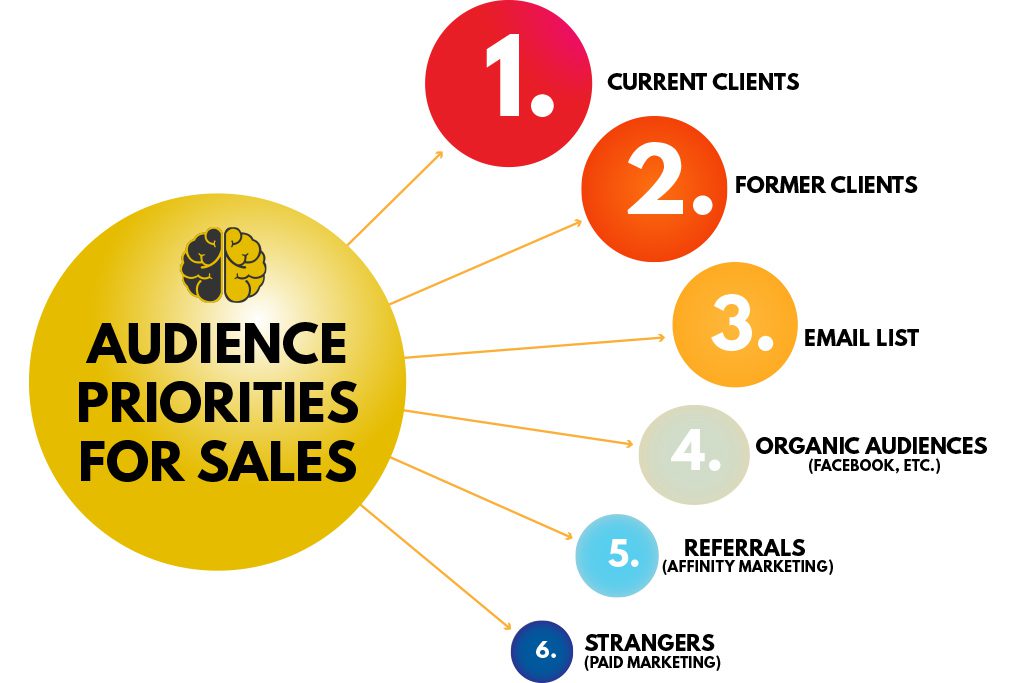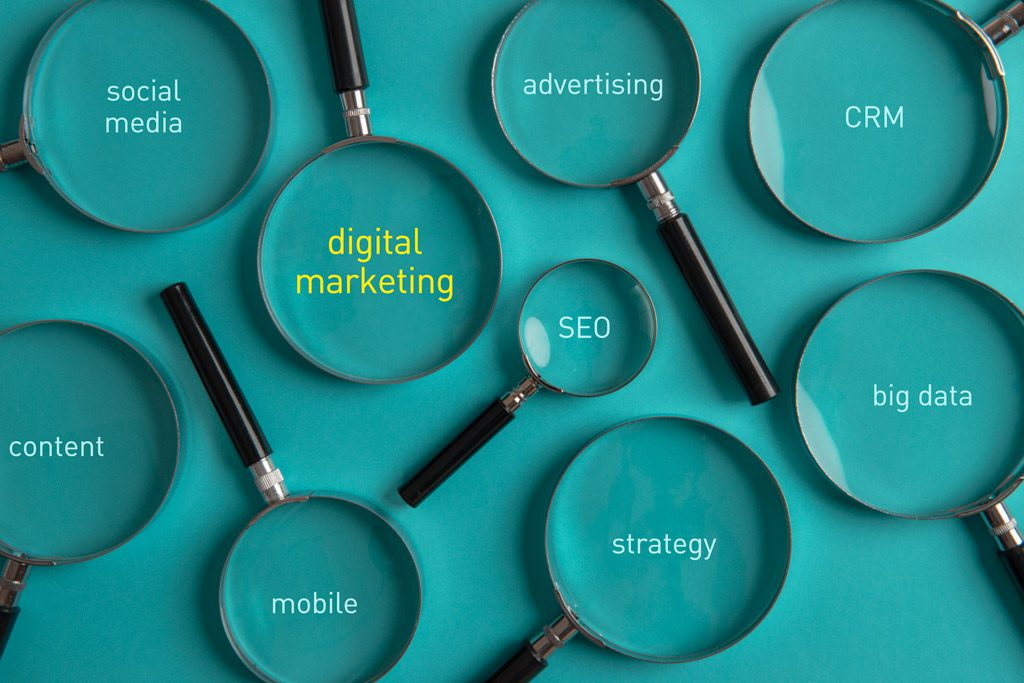Successful gyms have effective long-term professional marketing strategies.
If you’re in the fitness business running a studio, boutique, CrossFit affiliate, 24-7 facility or group training facility, the time is right for you to take advantage of a health-club market of over 71 million active consumers in the U.S. alone. Added to that, you have a huge audience of potential clients who aren’t working out but might start if you motivate them to take the first step.
Running an effective gym marketing campaign might seem easier said than done when you consider your budget and resources. However, with the help of web technology and your gym media, we will show you how to confidently boost your brand and generate ROI with little cash outlay. We’ll also tell you how to ensure you get results when you spend hard-earned money on paid advertising.
Marketing Objectives
Before starting your gym marketing plan, it’s essential to define your objectives. Do you want to promote your brand and increase your audience on social media? Or are you trying to motivate people to sign up for a nutrition kickstart, free consultation (No Sweat Intro) or other program?
Whatever your goal is, you need to make it clear and then lay out the plan to achieve it. For example, if you want to attract a consistent stream of high-value clients with a firm commitment to health and fitness, your objectives might be:
1. Increasing free-consultation bookings through referrals from present clients.
2. Increasing close rate in consultations.
3. Expanding your contact list and nurturing leads through email campaigns.
4. Increasing social media subscriptions and engagement.
5. Fostering an image of quality and value.
6. Increasing brand awareness.

Prioritizing Your Target Audience
Every successful market plan centers on a target audience. In the fitness world, the target audience is made up of the people who are most likely to join your gym. For example:
- A spin studio might focus on local people who want to burn fat and lose weight through high-intensity interval training on stationary bikes in a group setting.
- An access-only gym in an office district might try to attract busy professionals who want to do their own strength and cardio workouts using a host of modern fitness machines in a facility that features showers and towel service.
- A microgym might target high-value clients who are willing to pay a premium rate for high-touch services including personal training and nutrition coaching.
If your gym is entirely new, you’ll need to research your area to pinpoint the best audience for your initial client pool. Some general stats to consider are:
- About 60 percent of gym-goers are between 18 and 34 years old. Around 31 percent are between 35 and 54.
- 50.5 percent of gym members are female.
- A majority of gym-goers have a household income over $75,000 a year.
Don’t Forget the Most Important People
It’s critical to ensure you know which people you want to attract—but don’t ever forget to put retention of current clients first.
Two-Brain’s data shows that retention is a key part of marketing—though many gym owners don’t realize it. The person most likely to be a client next month is the client you have this month. Present clients are the easiest—and cheapest—to resell, and they’re most likely to upgrade to other service packages.
Even better, they can become multipliers as a source of referrals from their contact networks. Gyms that implement an Affinity Marketing plan use precise tactics to encourage satisfied current clients to connect the gym to their family and friends.
Get Two-Brain’s Affinity Marketing Guide here.
Although clients acquired through paid advertising are essential, it is best to focus on this group in the latter stages of your gym marketing campaign. Referrals, your gym’s media and unpaid content marketing channels are very effective ways to improve your overall return on investment (ROI). With that in mind, your priorities for sales should be:
1. Current clients.
2. Former clients.
3. People on your email list.
4. Organic audiences from social media content marketing.
5. Referrals (Affinity Marketing).
6. Strangers from paid advertising.

Gym Marketing Strategies and Tactics
Your gym marketing strategy should include three aspects: affinity, organic and paid. As your gym business grows, the emphasis on the elements will change. But you should use affinity and organic marketing even when you get to the stage where paid ads are needed.
Typically, this is how the evolution occurs (remember that elements are added; they don’t replace foundational elements):
- Organic conversations help the owner build a client base of one to five.
- Referrals take the enterprise to 15 to 20 clients.
- Affinity Marketing with light media placement creates a client base of 20 to 50.
- High website recruitment, content marketing on several social media platforms, and funnel advertising grow the gym from 50 to 100 clients.
- Global sales activity is needed for a 150-plus client base.
If you use affinity, organic and paid marketing correctly, your gym can grow quickly. Plus, you’ll save time and resources that might be wasted on other strategies. This three-pronged approach helps you leverage hard-won existing clients to acquire warm leads, nurture an ever-growing audience and build brand recognition, and work to start conversations with new people who are likely to benefit from your services.
The following is a thorough breakdown of each phase.

Affinity Marketing
Everyone in business knows that nothing tops word-of-mouth advertising. However, you can’t wait for your existing members to bring in their acquaintances and loved ones. The passive approach to the customer referral market will not boost your membership acquisition.
Two Brain’s Affinity Marketing strategy is a supercharged version of peer-to-peer referrals. By motivating your best members to invite people with whom they share strong bonds, the process produces:
- Quality new clients with an existing connection to other clients.
- Great conversion results in a non-sales environment.
- Cost-effective exponential growth.
- A family atmosphere with high current-client satisfaction.
- A way to keep cloning your best clients.
Affinity Marketing allows you to leverage your genuine care for your clients a create a tangible impact on your gym’s ecosystem. Its synergy can create a win-win situation for everyone involved, and you will discover that “helping” people connected to clients is a much more powerful gym marketing tool than selling.
Affinity and Gym Marketing
The blueprint for Affinity Marketing requires you to arrange clients and potential clients into groups according to their affinity to your business. Because affinity refers to the level of favor and respect a person has for something, your current clients occupy your highest affinity level. The second highest affinity level is their loved ones, including household members and family. The next highest affinity group: co-workers, followed by friends, then by people who share the same hobby or pastime.
Start the Affinity Marketing process by having conversations with clients who are closest to your brand and work your way through your membership.
Regardless of your gym marketing phase, Affinity Marketing should be a continuing force in your plan forever. It should always run in the background no matter what you do with organic content or paid advertising.
Here are the simple steps for a successful Affinity Marketing campaign.
Step 1. Identify Your “Seed Clients”
You know your best clients because they are easy to spot. They participate and pay the most. Also, they chum it up with other members, and they like to talk to you. Hands down, they are the happiest and most satisfied with your brand. They’re “mavens.”
In a more precise way, you can identify your seed clients by using Mike Michalowicz’s method of ranking your best clients with a two-column list on a notepad or Word document. In one column, list all the fun clients—those who make you happiest. List the highest paying clients in the other column. The clients who make both lists are your seed clients.
Step 2. Find Your Seed Clients’ Inner Circle
During your conversations with your seed clients, find out specifics about the people closest to them, including names of relatives, friends, etc. Also, note other associations, like places of work and churches. After you go through all your seed clients, move on to the rest of your clients and learn about their connections.
Step 3. Schedule Goal Review Sessions With Your Clients
Goal review sessions should be a standard practice because they are essential for keeping your clients on track with training. However, they are also an opportunity to initiate an Affinity Marketing conversation. It should become a natural part of the session to ask about clients’ close contacts and how you can help them. Remember: It’s not about selling but about finding ways to help the people your clients care about through your services.
Step 4. Update the Plan or Make Them Famous!
During the goal review, you can determine whether your clients are happy with their progress. If not, choose a metric they want to change the most and create a new plan based on it. In some cases, this new plan will result in upgraded service packages. For example, a client who’s unsatisfied with weight-loss progress might want to add nutrition coaching to a personal-training package. On the other hand, congratulate satisfied clients and share their stories on your social media and other gym media. Putting them on a podium will make them feel great and create the “social proof” that’s essential in any marketing effort.
Step 5. Mention a High-Affinity Connection
As you engage in conversations with your clients, you should become skillful at leading the discussion toward family, friends and associates. For example, you could ask questions like:
- Who’s been the most support for you?
- How are your co-workers doing during the busy season?
- How is your rec-league team doing this year?

Step 6. Offer to Help
Invariably, most clients will mention how someone needs to lose weight, get in shape, build strength and so on. This type of comment is your cue to offer solutions for that person and provide an easy avenue for reaching their fitness goals at your gym. You’re offering help!
Ask your client for an introduction or the contact info of the person you might be able to help. You can even suggest a joint personal training session, a free fitness assessment or any other enticement that comes to mind. Remember: Your current client knows your service works and wants acquaintances to become fit and healthy, too. Your clients will usually be happy to help you connect with their family and friends.
Be sure to connect with the referral fast!
Step 7. Reward the Referring Client
When clients refer friends who join your gym, reward them with a personalized gift and a handwritten note—something that shows your appreciation for their trust in you and your system. Avoid giving out free months or discounts because doing so attracts cost-sensitive consumers and feels like “bribery.” Instead, create a referral culture that’s based on genuinely helpful actions.
Step 8. Practice Affinity Marketing 10 Times a Month
Affinity Marketing works best when you go through the first seven steps with 10 clients a month. This requires you to set time aside in your marketing plan. The rewards for doing so are great: Gyms that are good at Affinity Marketing often don’t have to run ads at all.
Step 9. Run a Group Activity
If you use them wisely, quarterly group events can complement your individual Affinity Marketing efforts. You can use your social media content marketing and gym media to encourage members to invite their high-affinity contacts to these functions. Some possible titles are:
- Date Night Workouts.
- Best Buddy Cardio Rush.
- Family Festival Calorie Burn.
- “Your Gym Name” Crunch Classic.
- Wine ‘N’ WOD (Two-Brain supplies an exact plan for this event to clients).
Regardless of how you arrange it, your end game is to get as many bookings from the event as you can, meaning you must take the initiative to get people to commit to a No Sweat Intro. Even if they don’t commit, make sure you collect the email addresses of all attendees and add them to your contact list for nurturing.

Unpaid Social Media Content Marketing
Social media provides an excellent gym marketing channel for establishing your brand in the local market, developing an active following and attracting new clients. However, getting the most from your social media content marketing campaign requires the same sort of steadfast planning as Affinity Marketing.
The first task is to determine which social media platforms work best for reaching your target audience. Because they have broad appeal, Facebook and Instagram are the most popular social media platforms among all demographics. These platforms are excellent for sharing text and visual media content. Also, they provide an accurate and near-real-time tracking system to gauge your content effectiveness, along with a content tagging system for focusing on your target market.
Although you don’t invest money in social media content marketing, you invest your time. So, to ensure you use your time wisely, you can adopt a schedule close to this one.
- Send daily posts to your feed, complete with hashtags and location tags to attract new followers. Along with engaging text, you can use videos and photos interchangeably. Check your engagement stats to see which types of post do best, then prioritize them.
- Depending on the platform, post around five daily “stories” or a live feed once a week.
- Respond to every pertinent comment and direct message within two days or even immediately if you can.
- Direct people from social media to your website to check out your blog.
- On Facebook, join local fitness-oriented groups and participate daily.
- Offer free “lead magnets” to get people to supply contact info or start conversations in which you can sell by chat.
For the most part, people get turned off to advertising-dominant profiles. So, you should target a content-to-promotion ratio of about 4:1. Be sure to provide value with posts that don’t always push people to buy.
The success of your social media content marketing relies on your ability to keep your followers engaged by commenting, messaging and replying. To this point, a 2017 Sprout Social study reported that 48 percent of consumers said responsive social media interactions encouraged them to make purchases. This quality beat out all other business social media activities, including promotional offers and educational content. Be sure to interact with your audience quickly and as often as you can.
Content Is King and Queen
Creating fresh content can be challenging for many people. If you run low on ideas, try to find new material from your followers’ comments, questions and concerns. By simply addressing their issues, you can create informative and exciting content.
Another excellent way of producing great content is by using best-of lists. This form of content allows you to show clients and prospective clients your willingness to help, your fitness expertise and your depth. At the outset, you can start with a simple approach shared by Mike Warkentin on the Two-Brain blog.
Just make a list of best-of topics like best sports drinks, best exercise apparel shops in your hometown, best butt exercises, or best CrossFit shoes. Then, choose one topic and list five items under it, writing a short blurb about each. In the end, make sure you include a call-to-action such as:
- If you have any other questions about starting a fitness regimen, call us at (your business number).
- For more information about our services, call us at (your number).
- If you want a No Sweat Intro, book a reservation at (your website landing page).
If you’re still short on ideas, ask your best clients what they want to know about, or ask your newest clients what would have helped them find your gym sooner. Then create that content for your social media platforms.

Paid Digital Marketing
As the third part of your gym marketing plan, paid digital marketing comes into play only after successfully addressing the others. Businesses pay Google, Microsoft Advertising and social media platforms to display sponsored media messages or display ads to drive consumer traffic to their websites or other landing pages. The most common format of paid digital marketing is pay-per-click, meaning you only pay when someone clicks on your ad prompt to visit a landing page.
Paid digital marketing is most useful for increasing brand awareness and attracting new client prospects at the beginning of their product exploration. This fact is why we consider paid advertising as selling to strangers—which is more complicated than selling to people with whom you have already established a relationship through Affinity Marketing, social media content marketing and gym media. Even with “retargeting campaigns” that remind people of things they saw, added to a cart or almost acted on, your paid marketing audience has less affinity for your business.
Numbers Matter!
Because you are forking out money for these “cold leads,” it’s imperative to keep track of your return on investment (ROI). Primary advertising platforms like Google and Facebook have exceptionally informative campaign dashboards that provide vital metrics like cost-per-click (CPC), conversion rates, impressions, clicks, total ad cost, total clicks and more. You can go even further to review various combinations of ad copy and media—Facebook’s dynamic creative system—and some gyms use special spreadsheets to track ROI on front-end offers, re-sells and long-term engagement (Two-Brain supplies them to clients).
For your gym business, the key performance indicators (KPIs) in digital marketing are CPC and conversions. CPC is a good indicator of the effectiveness of your display ad or promotion message. A declining cost-per-click metric is a budget optimizer because it shows your ad is routing consumers to your website at a lower cost.
However, you should have a predetermined spending limit before starting the campaign. And if you know your set, show and close rates, as well as your lifetime client value (you should!), you might be prepared to spend a lot on client acquisition because you know you’ll recoup that money over time.
For example, some gyms don’t worry about acquisition costs others consider “high” because they know their numbers. If it costs $50 to acquire a client who will generate $400 in front-end profit, that investment is well worth it. It’s increasingly worth it if you know that client will almost certainly spend an additional $1,500 in your business over the next months due to your re-sell, upsell and retention strategies. And if that client refers two more because of your Affinity Marketing efforts, that initial $50 cost of acquisition is inconsequential!

Conversions and Sales
The conversions metric reflects the total success of your digital gym marketing campaign because it measures the number of times someone executed your call to action, meaning they called you or performed whatever engagement you requested. Conversion rates are tied to downstream sales numbers, as mentioned above.
For example, if your goal is to get people to book free fitness consultations, every conversion via your ads represents an “at bat” for your sales team. You’ll need to ensure they have the training and tools they need to make as many sales as possible. If your goal is to get people on your mailing list in exchange for a lead magnet, your downstream numbers will be affected by your lead-nurturing systems—and eventually your sales team’s work with leads who book consultations.
Paid advertising can be complicated and costly, so we’ll leave you with this simple—and essential—rule:
Always track your metrics to ensure you’re getting ROI on your paid marketing efforts.

Measuring the Success of Your Gym Marketing Plan
Measuring and evaluating your overall gym marketing plan is the last and most essential part of determining the success of your strategies and tactics. As valuable as these metrics are, you must go beyond reviewing only average revenue per member (ARM), length of engagement (LEG), lifetime value (LTV) and total members. To measure the effectiveness of each component of the plan, you need an effective way of determining which methods are working, what you can improve on and which parts to discontinue.
In our earlier example, we used the following objectives:
1. Increasing free-consultation bookings through referrals from present clients.
2. Increasing close rate in consultations.
3. Expanding your contact list and nurturing leads through email campaigns.
4. Increasing social media subscriptions and engagement.
5. Fostering an image of quality and value.
6. Increasing brand awareness.
As you can see, objectives 1, 2, 3 and 4 are easily trackable with quantitative measures. Numbers 5 and 6 are harder to qualify and evaluate. Collecting and quantitatively analyzing responses from your members’ goal sessions is helpful in assessing value-building efforts.
For example: Of the 100 members you interviewed in their quarterly goal review sessions, 95 percent said your gym provided all the tools necessary for them to reach their goals. That shows you’ve built a lot of value.
Along with the goal review session feedback, you can get a clearer picture of how well you’re meeting your brand-awareness objectives by doing internal and external surveys. You can conduct internal surveys through social media, cancellation forms, informal talks with your members and gym media. In addition, many free online survey tools such as Google forms, SurveyMonkey and SurveyNuts can provide you with effective gym survey formats.
External surveys fall in the category of gym market research. So, it is essential to have a fully identified target market. If you do, you can perform a targeted phone or online survey to gauge your brand’s reach in your area if you decide there is ROI in doing so.
To some degree, brand awareness can also be measured by increasing social-media metrics and website traffic, so these numbers should be reviewed regularly when evaluating your gym-marketing plan.
Your Gym Marketing Plan and Your Future
Running a successful gym is not easy, and there is no guarantee the business will survive.
However, by creating, instituting and optimizing a solid gym marketing plan, you’ll give yourself the best shot at profiting from your hard work and investment.
About the Author: John Burson successfully ran a personal training business for over 20 years, and he has written volumes of published articles on business entrepreneurship, finance and the fitness industry.

